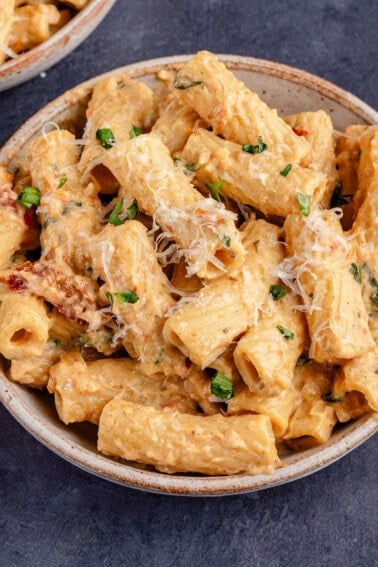This post may contain affiliate links. Please read our disclosure policy.
Enjoy the warmth and comfort of a bowl of Filipino Ginataang Bilo-Bilo at home! It’s made with langka, tender sweet potatoes, tapioca pearls, saba bananas, and the best sticky rice balls simmered in a sweet coconut milk soup. Serve as a delicious dessert or afternoon snack.
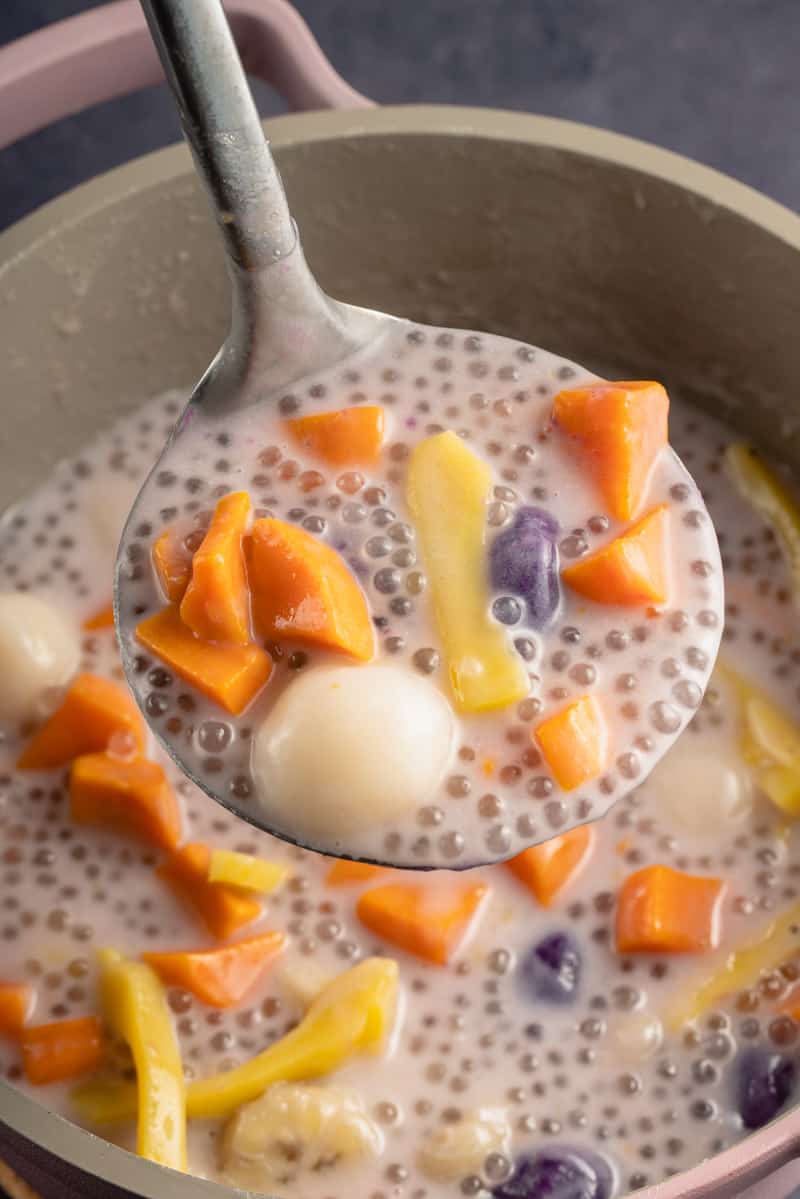
What is Ginataang Bilo-Bilo?
Ginataang Bilo-Bilo is a Filipino dessert or snack that is commonly enjoyed as a sweet comfort food. The Tagalog word “ginataan” comes from the word “gata” and loosely translates to “made from coconut milk.” “Bilo-bilo,” or rice flour balls, comes from the Tagalog word “bilog” which means round.
This dessert is said to have originated in Luzon, the northern Philippines Island. Over time, different regions adapted the recipe to make it their own. For example, some recipes are made with pandan leaves and a variety of different fruits, whereas this recipe is made with jackfruit, saba bananas, and tapioca pearls.
If you enjoy Vietnamese cuisine, you may have tried chè chuối or chè thái, two fruity desserts that are commonly compared to Filipino Ginataang Bilo-Bilo.
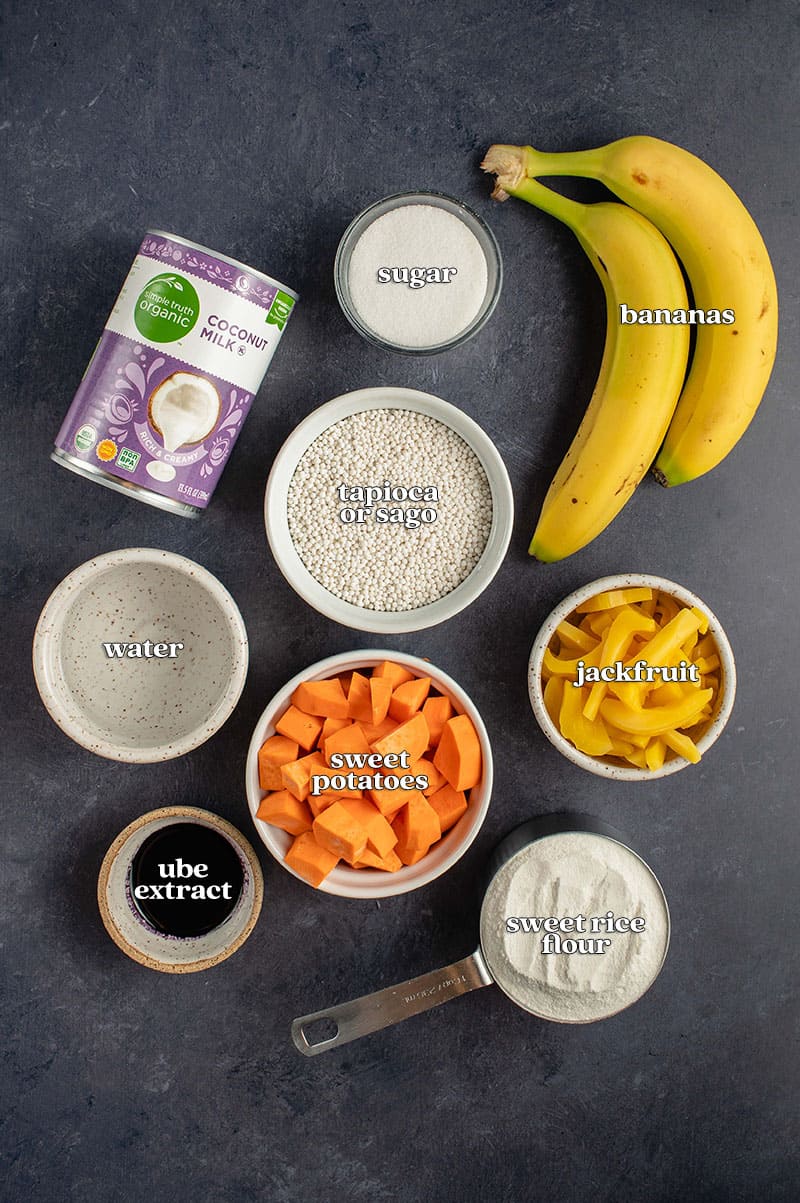
Ingredients You’ll Need
- Mini sago pearls or tapioca pearls: Sago pearls are made from the tropical plant, sago palm. The pearls themselves are rather neutral in flavor but are soft and chewy once cooked. If you cannot find sago, cassava-based tapioca balls are a good alternative. I was unable to locate sago pearls, so today, we are using small tapioca pearls.
- Glutinous rice flour: Also known as sweet rice flour, this ingredient is essential to making homemade chewy rice balls. When mixed with water, it becomes sticky, and moist, and has a sweet, nutty flavor profile.
- Ube powder + extract (optional): These purple yam ingredients add a beautiful purple color and ube flavor to the ginataang. Ube ingredients can be difficult to find in stores. I order ube extract on Amazon. Use this ube powder and extract to make Fluffy Ube Pandesal, Creamy Ube Pie, Ube Pichi Pichi, and Vegan Ube Sugar Cookies.
- Coconut milk: In order to make the creamiest ginataang, use full-fat creamy coconut milk. It contains less water than lite coconut milk and will make the best decadent dessert soup.
- Sugar: For the most neutral flavored sweetness, we used granulated white sugar. We have not tested this coconut soup with another sweetener and cannot advise. To ensure your sugar is vegan, opt for an organic variety from brands such as Wholesome organics.
- Saba bananas: This traditional banana is native to the Philippines yet can be purchased in Asian markets throughout the United States. They’re often called cooking bananas and are known for their sweet, starchy consistency. They’re most similar to plantains or the cardaba banana, so if you can’t find saba bananas near you, either are a great alternative. You can also use Cavendish bananas if needed!
- Sweet potato: Another source of sweet starchiness in this Filipino dessert. We recommend peeling and dicing uniformly for the best texture and even cooking.
- Jackfruit: Since this recipe is a dessert, make sure to purchase ripe, juicy jackfruit instead of young jackfruit. Both fresh jackfruit and canned jackfruit will work. If using fresh, follow our helpful guide on How to Cut Jackfruit & Cook Jackfruit Seeds (with Photos & Video)
Equipment Needed
- Large pot
- Large mixing bowl
- Whisk
- Sturdy spatula or wooden spoon
- Spoon or cookie scoop
How to Make Ginataang Bilo-Bilo with Langka
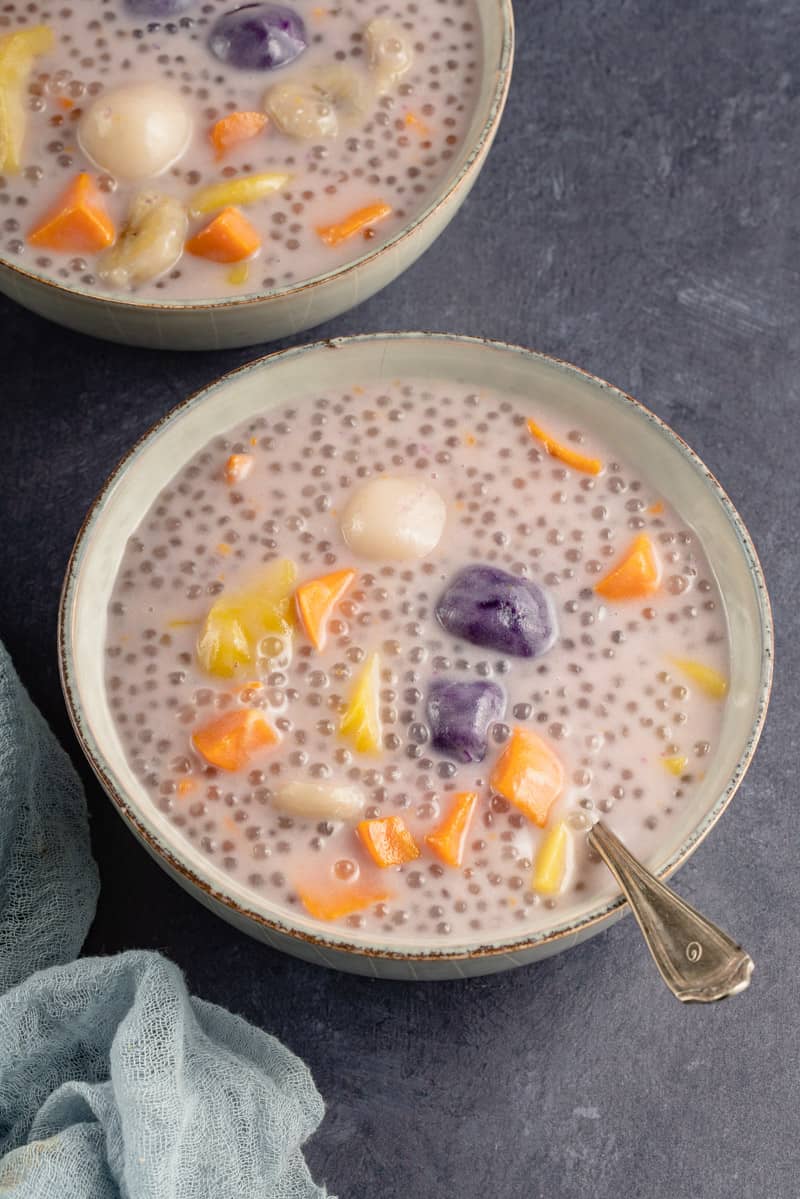
Step 1: Make the Tapioca Pearls
If you’ve made our Easy Taho Recipe with Arnibal, you’re familiar with this process!
- Bring a pot of water to a boil. In a large cooking pot over medium-high heat, bring 6 cups of water to a boil. Once boiling, add the tapioca pearls, stirring right away to prevent sticking.
- Cook the pearls. Reduce to medium heat and cook the tapioca pearls for 5 minutes, mixing regularly.
- Soak for 10 minutes. Turn off the heat, cover, and allow the tapioca pearls to soak for 10 minutes.
- Rinse under cool water. After 10 minutes, drain the excess water and rinse the pearls until room temperature.
- Boil another 6 cups of water. Bring another 6 cups of water to a boil, then add in the partially cooked tapioca pearls.
- Boil again until translucent. Bring the tapioca to a boil once more, then turn off the heat, cover, and soak for 7 minutes. When the pearls are chewy and transparent, they are ready.
- Drain and rinse. Run the tapioca under cool water until completely cooled, then set aside while you prepare the bilo-bilo.
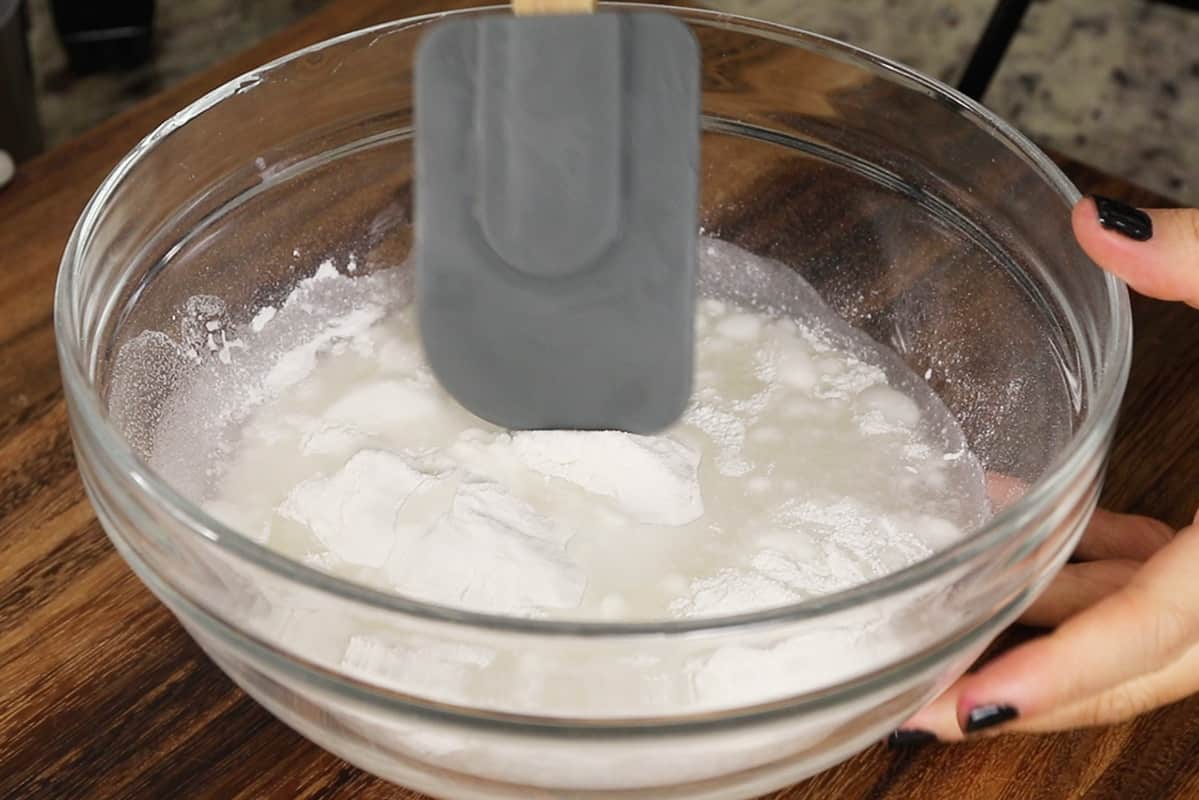
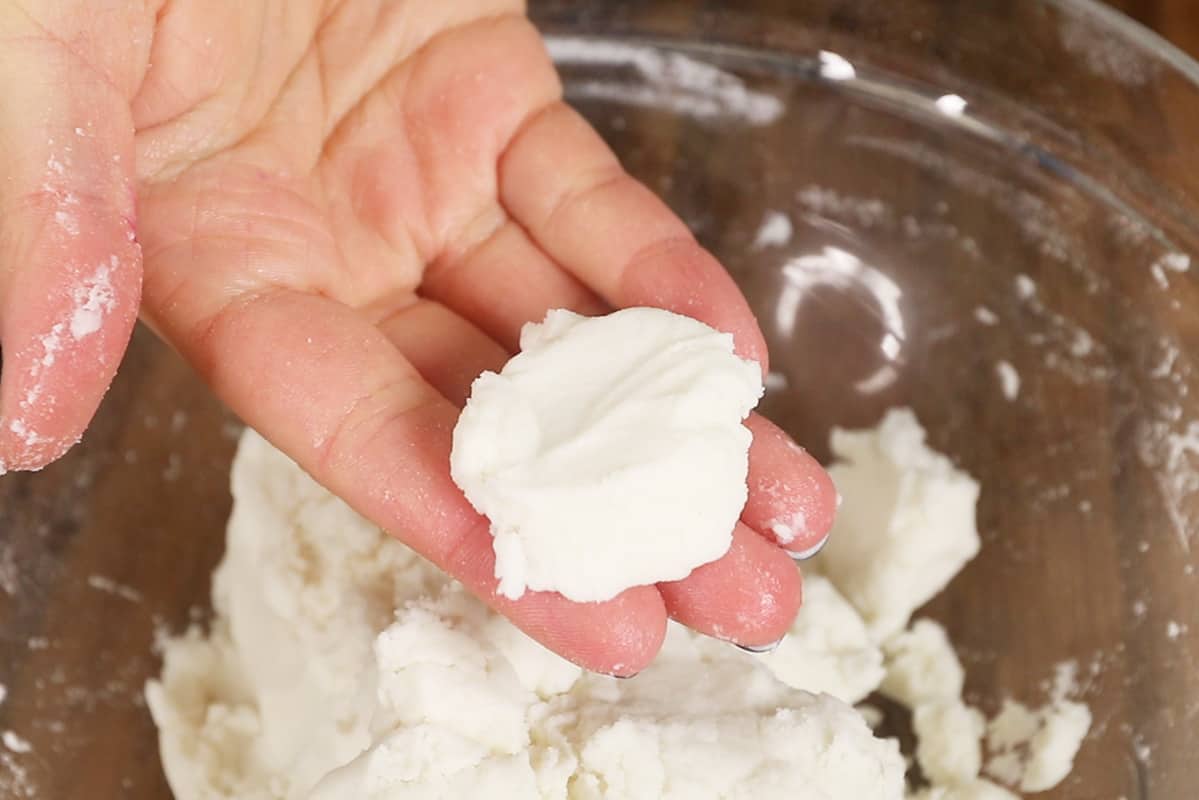
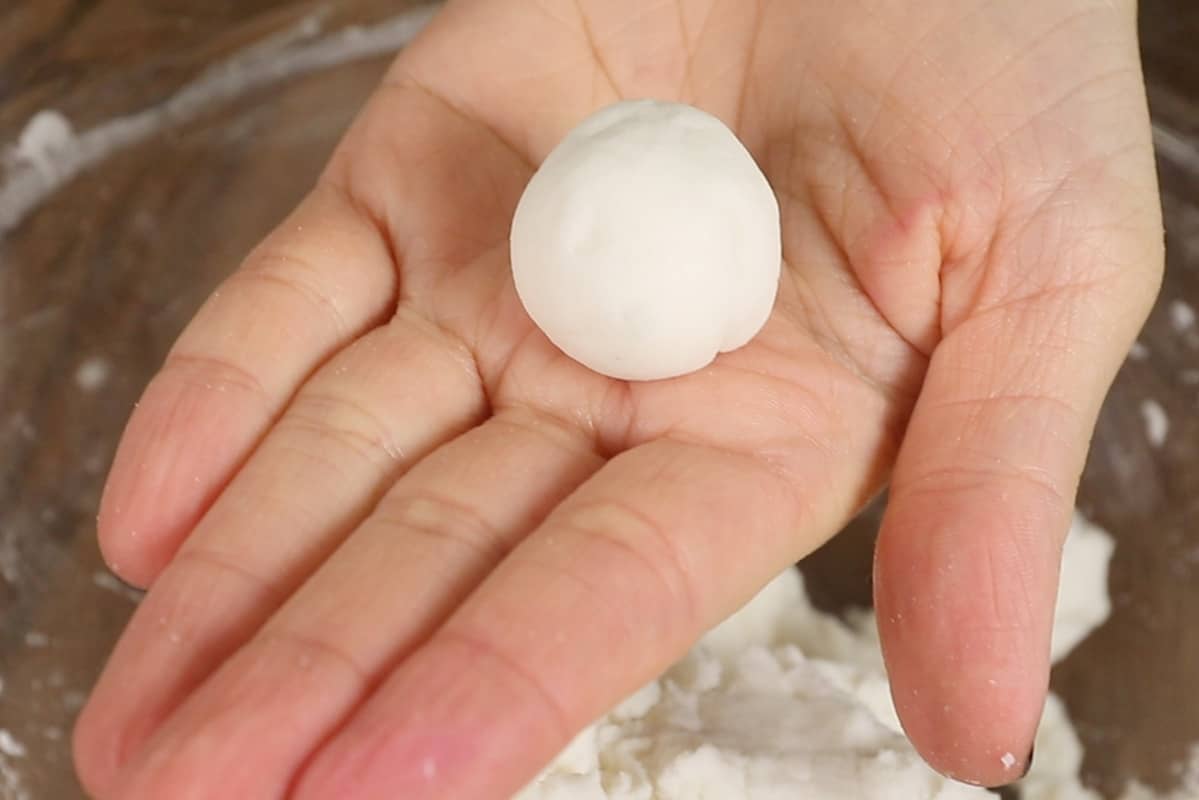
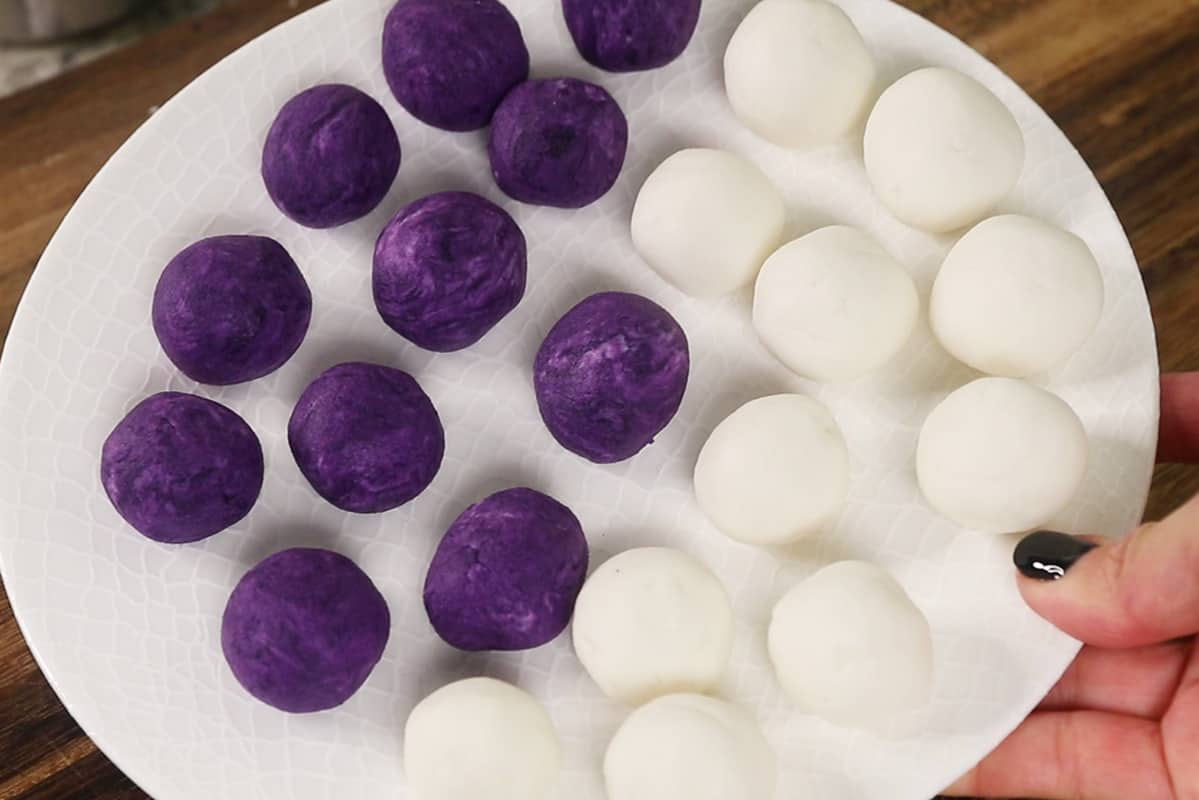
Step 2: Form the Bilo-Bilo (Glutinous Rice Balls)
- Make the dough. In a large bowl, whisk the glutinous rice flour and water using a sturdy spatula or wooden spoon. Once a dough forms, use your hands to knead the dough smooth.
- For ube flavored bilo-bilo: Separate the dough in half and place half of the dough in another bowl. Mix in the ube extract.
- Roll into balls. This dough should make about 24 balls that are 1/2 tablespoon in size.
- Cover and set aside. Once your rice balls are formed, cover them with plastic wrap and set aside.
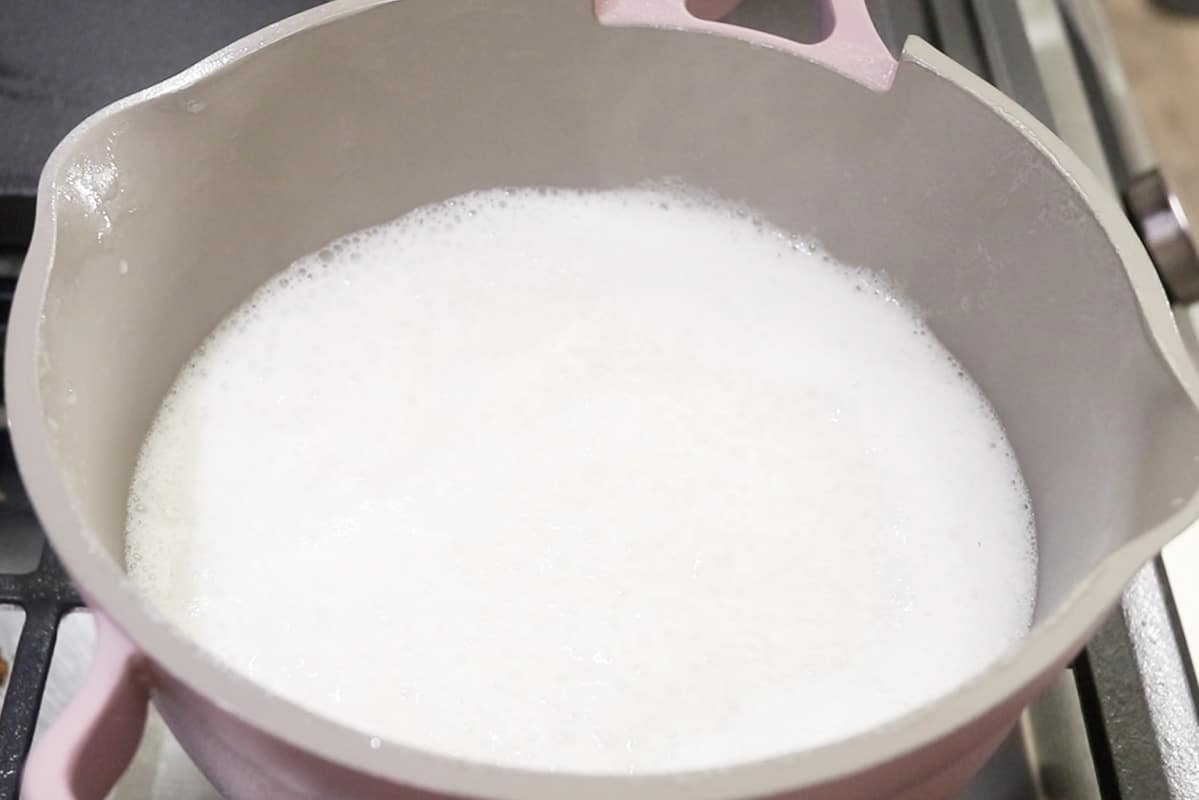
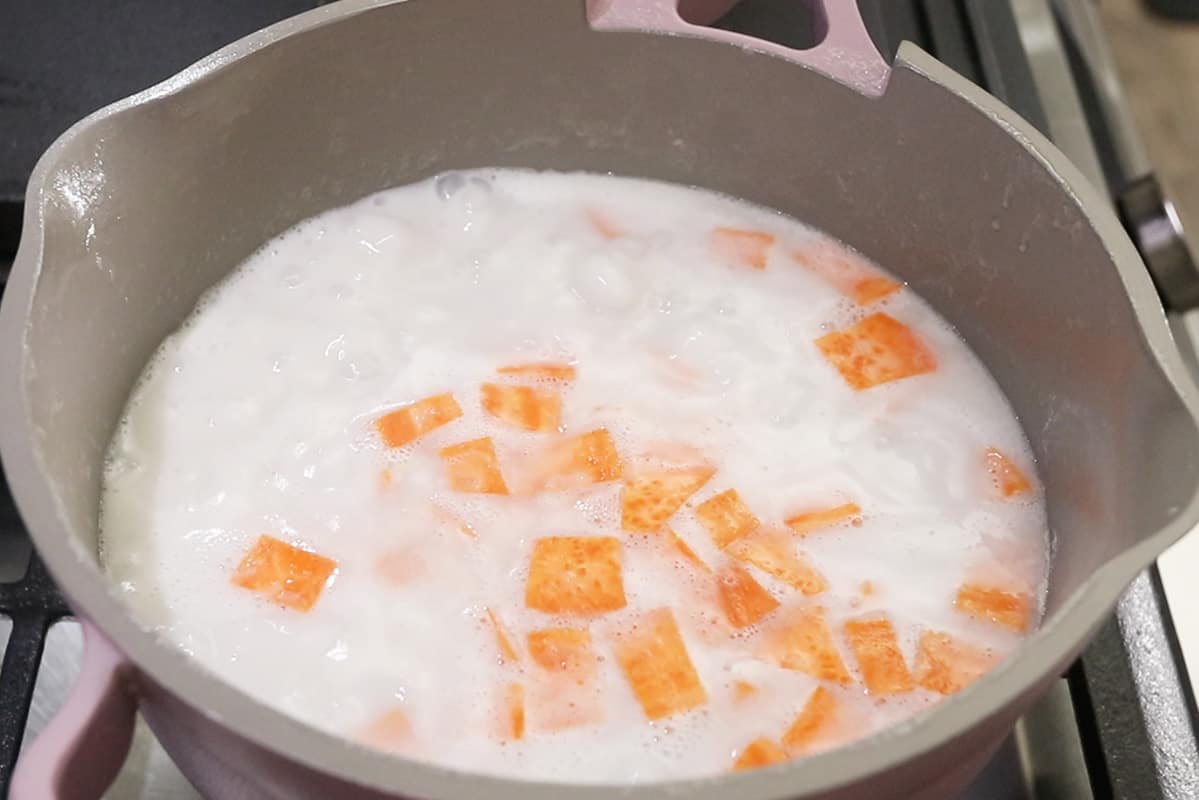
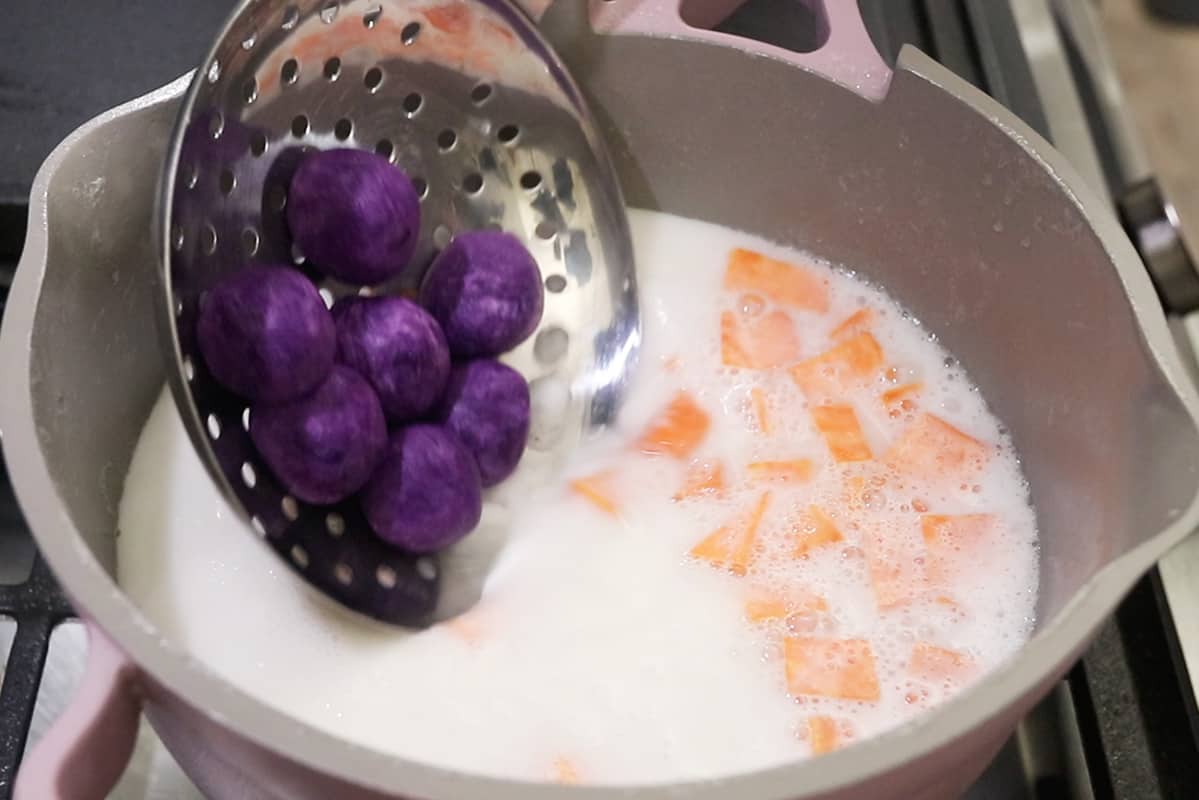
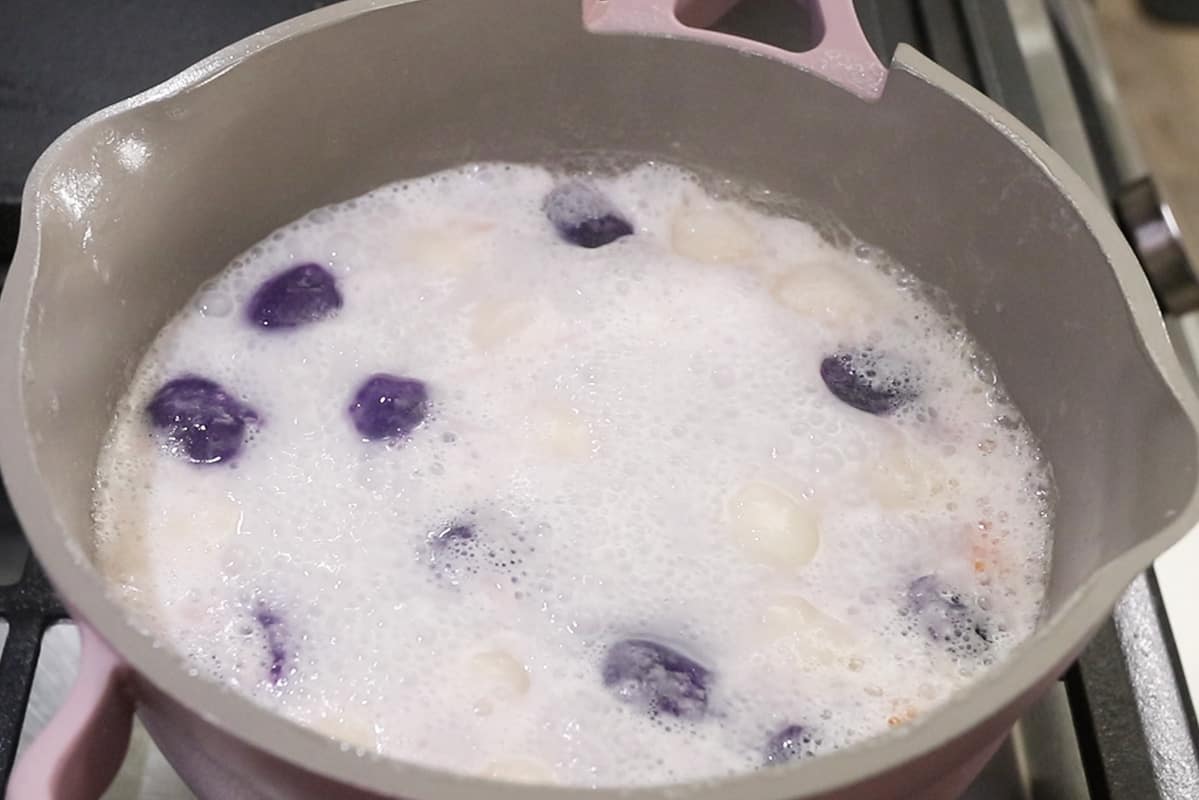
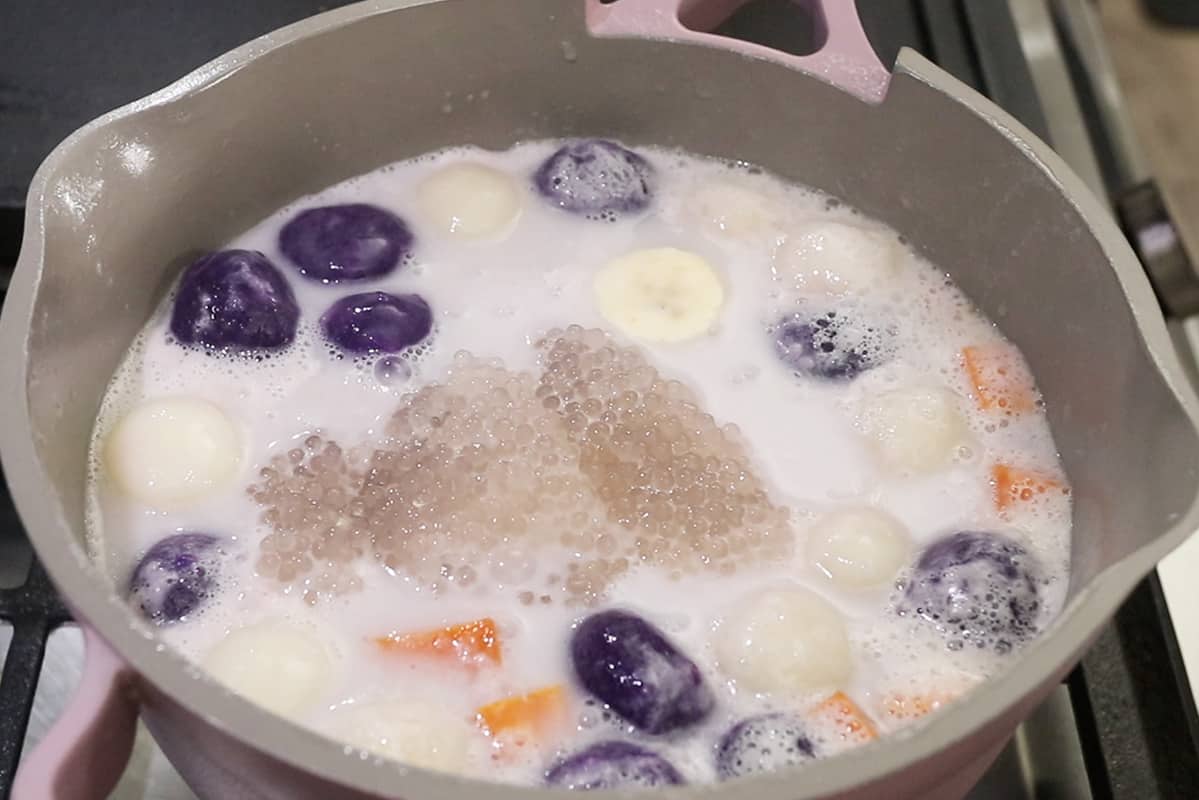
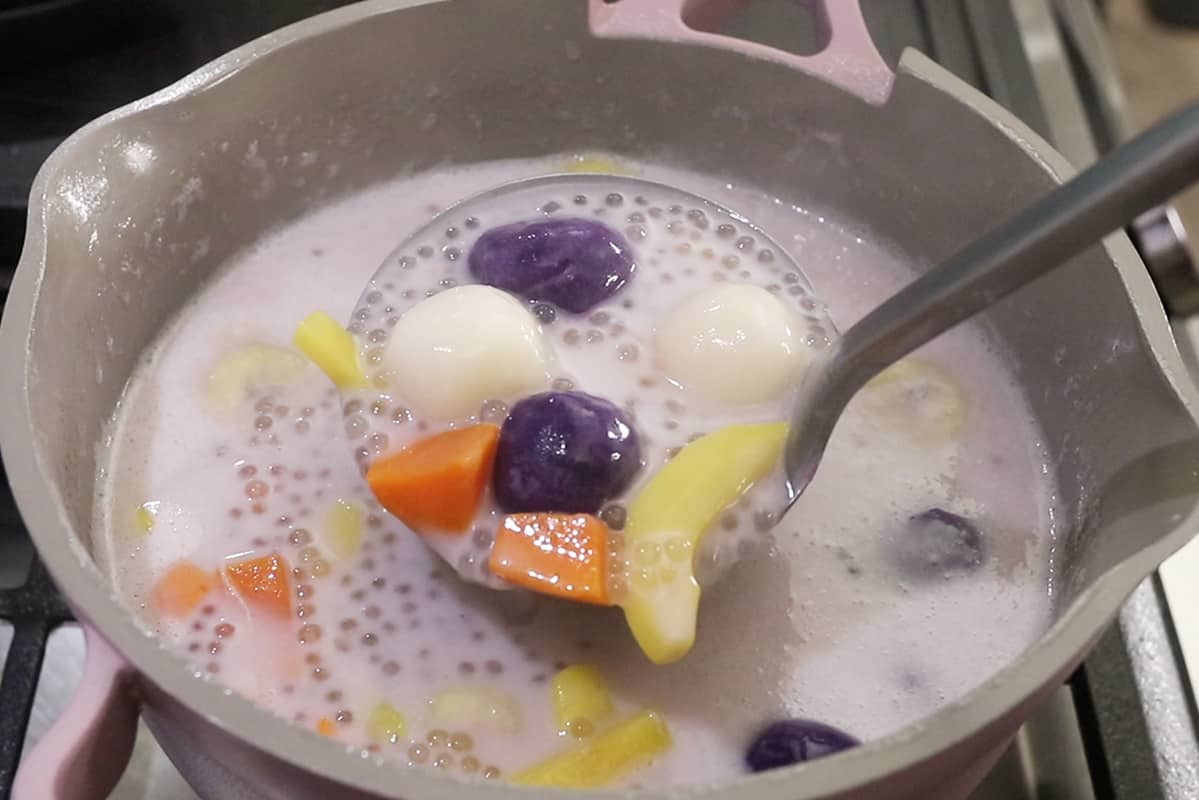
Step 3: Make the Coconut Soup
- Bring water, coconut milk, and sugar to a boil. Stir these ingredients together in a large pot and bring the coconut milk mixture to a boil until the sugar has dissolved.
- Add sweet potato and bilo-bilo. Reduce the heat to a simmer, then add the diced sweet potato and handmade sticky rice balls. Simmer for 5-8 minutes or until the sweet potato is fork tender.
- Add banana, jackfruit strips, and cooked tapioca pearls. Stir to combine and simmer for another 3-5 minutes, or unto the saba bananas are tender.
- Serve. Remove the Ginataang bilo-bilo from the heat and serve while warm.
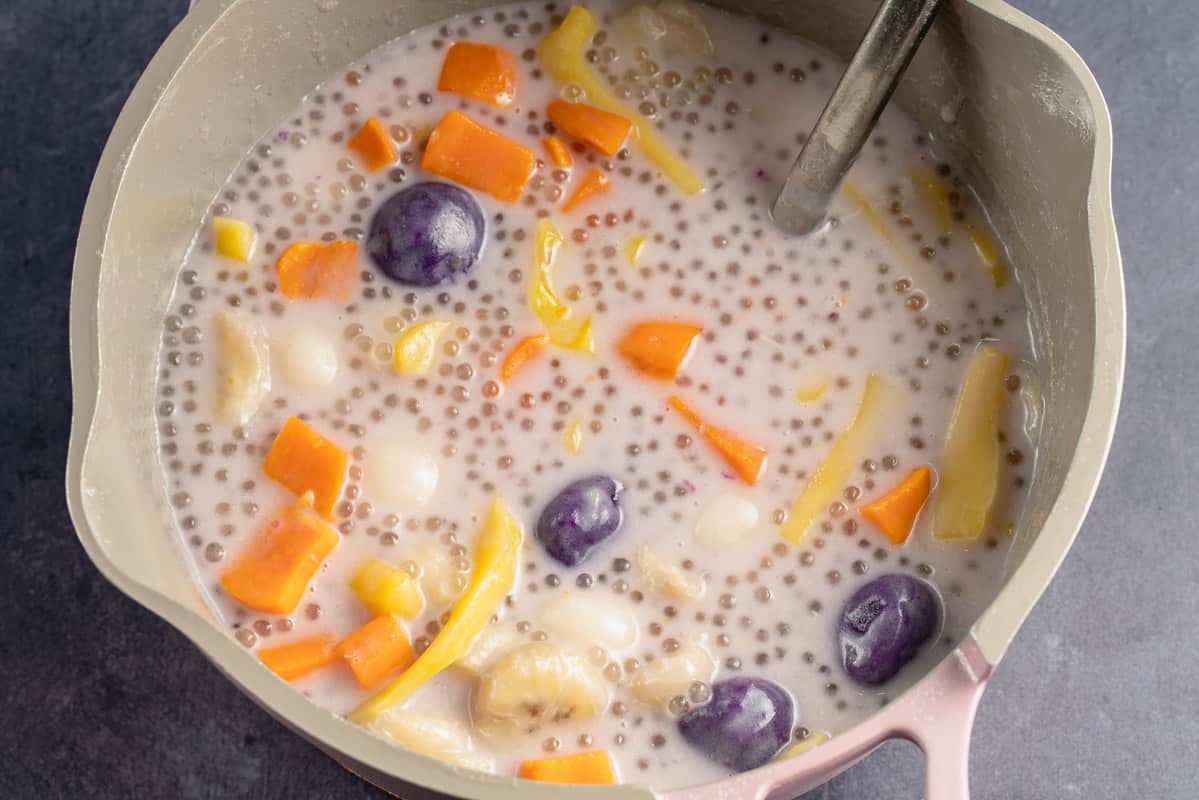
Storage Instructions
Ginataang bilo-bilo will keep for up to 3 days when stored in an airtight container in the refrigerator. Keep in mind that the coconut soup will thicken as it cools, so if needed, add additional coconut milk to thin it out again.
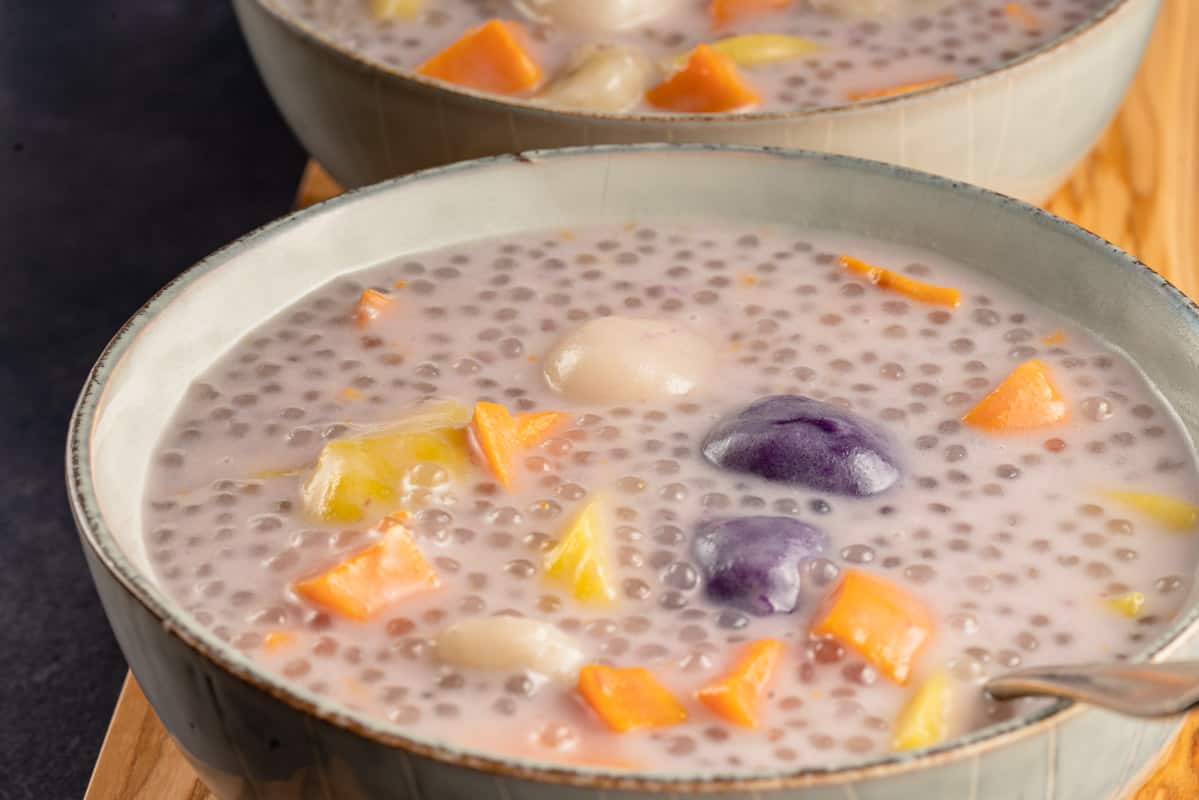
More Vegan Filipino Dessert Recipes You May Enjoy:
- Avocado with Condensed Milk – a must-try Filipino dessert that’s ready in 5 minutes!
- Easy Taho Recipe with Arnibal – another favorite dessert made with tapioca pearls and sweet tofu.
- Suman Malagkit (Filipino Steamed Rice Cakes) – if you love bilo-bilo, you will love these rice cakes!
- Banana Cue (Filipino Fried Caramelized Bananas) – a popular Filipino street food everyone loves.
- Creamy Ube Pie (Vegan) – one of my favorite ways to enjoy purple sweet potato.
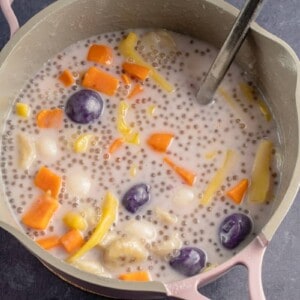
Ginataang Bilo-Bilo Recipe
- Total Time: 1 hour
- Yield: About 6 servings
- Diet: Vegan
Description
Enjoy the warmth and comfort of a bowl of Filipino Ginataang Bilo-Bilo at home! It’s made with langka, tender sweet potatoes, tapioca pearls, saba bananas, and the best sticky rice balls simmered in a sweet coconut milk soup. Serve as a delicious dessert or afternoon snack.
Ingredients
Tapioca Pearls
- 1/4 cup + 2 tablespoons dried small tapioca pearls
- 4 cups water
Bilo Bilo (Glutinous Rice Balls)
- 1 cup glutinous rice flour
- 1/2 cup water
- Optional: 1/4 teaspoon ube extract
Coconut Soup
- 1 1/2 cups water
- 1 can (13.5 ounce) coconut milk
- 1/4 cup + 2 tablespoons granulated white sugar
- 1 cup sweet potato, peeled and diced into 1/2-inch pieces
- 2 saba bananas, sliced (or use plantains or Cavendish bananas)
- ½ cup sweet jackfruit, sliced into strips
Equipment
-
- Sturdy spatula or wooden spoon
-
- Spoon or cookie scoop
Instructions
Tapioca Pearls
- In a pot over medium-high heat, boil 6 cups of water. Add tapioca pearls, stirring right away to prevent sticking.
- Reduce to medium flame and cook for 5 minutes, mixing regularly.
- Turn off the heat, cover, and soak for 10 minutes.
- Drain and rinse the tapioca pearls with running water until it is cooled.
- Bring another 6 cups of water to a boil, then add in the partially cooked tapioca.
- Bring to a boil again. Once boiling, turn off the heat, cover, and soak for 7 minutes. When it’s finished, it should be fully translucent.
- Drain and rinse the fully cooked tapioca with cold running water until completely cooled. Set aside.
Bilo Bilo (Glutinous Rice Balls)
- In a large bowl, mix together rice flour and water until a dough forms. Use your hands to knead the dough smooth.
- If you are making Ube flavored ones: add half of the dough to another bowl, then mix in ube extract.
- Divide into ½-tablespoon sized balls. Cover with plastic wrap and set aside.
Coconut Soup
- In a medium to large pot, mix together water, coconut milk, and sugar. Stir contents together and bring to a boil until sugar has dissolved.
- Reduce heat to a simmer. Add sweet potato and bilo-bilo and simmer for 5-8 minutes or until sweet potato is tender.
- Add in banana, jackfruit, and cooked tapioca pearls. Stir to combine and let simmer for another 3-5 minutes or until the banana is tender.
- Remove from heat and serve warm. Keep in mind that this will thicken as it cools.
Notes
- I was not able to find sago, so I used cassava-based tapioca balls as an alternative.
- I order ube extract on Amazon.
- In order to make the creamiest ginataang, use full-fat creamy coconut milk. It contains less water than lite coconut milk and will make the best decadent dessert soup.
- We used granulated white sugar. We have not tested this coconut soup with another sweetener and cannot advise. To ensure your sugar is vegan, opt for an organic variety from brands such as Wholesome organics.
- If you cannot find Saba Bananas (can sometimes be purchased in Asian markets fresh or frozen), you can opt for plantains or Cavendish bananas.
- Both ripe fresh jackfruit and canned ripe jackfruit will work. Young jackfruit will not work in this recipe.
- Prep Time: 15 minutes
- Cook Time: 45 minutes
- Category: Breakfast, Snack
- Method: Stovetop
- Cuisine: Filipino


